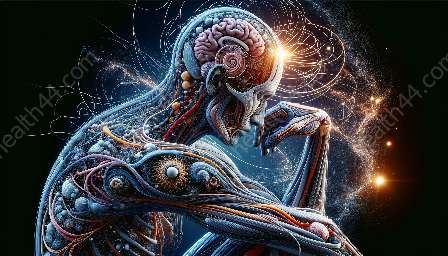Reproductive anatomy is a fascinating and essential aspect of human biology. It encompasses the structures and functions of the male and female reproductive systems, and provides insights into human reproduction, development, and overall health. An understanding of reproductive anatomy is crucial in health education and medical training, as it forms the basis for comprehending reproductive health, fertility, and related medical conditions.
The Female Reproductive System
The female reproductive system is a complex network of organs that facilitate conception, pregnancy, and childbirth. Key structures of the female reproductive system include the ovaries, fallopian tubes, uterus, cervix, and vagina. The ovaries are responsible for producing eggs and releasing hormones such as estrogen and progesterone. The fallopian tubes are the site of fertilization, where sperm meets the egg. The fertilized egg then travels to the uterus, where it implants and develops into a fetus during pregnancy. The cervix acts as a barrier between the uterus and the vaginal canal, while the vagina serves as the birth canal and a passage for menstrual flow.
Ovaries
The ovaries are paired organs located in the pelvis, and they play a central role in the production of eggs and female sex hormones. Each ovary contains numerous follicles, which are sac-like structures that house immature eggs. Throughout a woman's reproductive years, one or more follicles mature and release an egg in a process known as ovulation. Additionally, the ovaries produce the hormones estrogen and progesterone, which regulate the menstrual cycle and promote the development of secondary sexual characteristics.
Fallopian Tubes
The fallopian tubes, also known as oviducts, are slender tubes that extend from the uterus to the ovaries. Their primary function is to capture and transport eggs from the ovary to the uterus. If fertilization occurs, it typically happens in the fallopian tube, where sperm can reach the egg released by the ovary. After fertilization, the resulting zygote travels down the fallopian tube and implants in the lining of the uterus.
Uterus
The uterus, or womb, is a pear-shaped organ located in the pelvis between the bladder and the rectum. It plays a pivotal role in supporting fetal development during pregnancy. The inner lining of the uterus, known as the endometrium, thickens in preparation for potential implantation of a fertilized egg. If fertilization does not occur, the endometrial lining is shed during menstruation. During pregnancy, the uterus expands to accommodate the growing fetus and contracts during labor to expel the baby from the body.
Cervix
The cervix is the lower, narrow end of the uterus that connects to the vagina. It contains a canal through which sperm can travel to reach the uterus and fallopian tubes for fertilization. During childbirth, the cervix dilates to allow the passage of the baby from the uterus into the birth canal.
Vagina
The vagina is a muscular, elastic canal that extends from the cervix to the external genitalia. It serves as a conduit for menstrual blood and is also the location for sexual intercourse and the birth of a baby.
The Male Reproductive System
The male reproductive system is designed to produce and deliver sperm, enabling the fertilization of a female egg. Key structures of the male reproductive system include the testes, epididymis, vas deferens, seminal vesicles, prostate gland, and penis.
Testes
The testes, also known as testicles, are male reproductive organs responsible for producing sperm and the hormone testosterone. Sperm is produced within the seminiferous tubules of the testes, and testosterone is crucial for the development of male reproductive tissues and secondary sexual characteristics.
Epididymis
The epididymis is a coiled tube located on the back of each testicle, where sperm are stored and mature. It serves as a site for sperm to gain motility and become capable of fertilization.
Vas Deferens
The vas deferens is a duct that carries mature sperm from the epididymis to the urethra. During ejaculation, the vas deferens contracts to propel the sperm alongside fluids from the seminal vesicles and prostate gland into the urethra, forming semen.
Seminal Vesicles and Prostate Gland
The seminal vesicles and prostate gland are accessory reproductive glands that produce fluids that mix with sperm to form semen. These fluids provide nutrients and protection for the sperm, enhancing their viability and motility. Additionally, the secretions from these glands contribute to the ejaculatory process and aid in the nourishment of sperm inside the female reproductive tract.
Penis
The penis is the external male sexual organ that serves a dual function in urination and sexual intercourse. During sexual arousal, the penis becomes erect due to increased blood flow, enabling the insertion of the penis into the female vagina for the transfer of sperm.
Relevance to Health Education and Medical Training
Understanding reproductive anatomy is fundamental in health education and medical training, as it provides the groundwork for comprehending reproductive health, fertility, and the diagnosis and treatment of reproductive system-related conditions. Health educators and medical professionals need a comprehensive understanding of the male and female reproductive systems to address issues such as infertility, sexually transmitted infections, reproductive cancers, and other reproductive health concerns. By having a thorough knowledge of reproductive anatomy, educators and practitioners can effectively communicate with patients about their reproductive health and make informed decisions regarding medical care and interventions.
In conclusion, reproductive anatomy plays a crucial role in human biology and is essential for understanding human reproduction, development, and overall health. The intricate details of the male and female reproductive systems provide valuable insights into fertility, pregnancy, and the prevention and treatment of reproductive health conditions. Its relevance in health education and medical training underscores the importance of studying and comprehending reproductive anatomy for the benefit of individuals' health and well-being.


